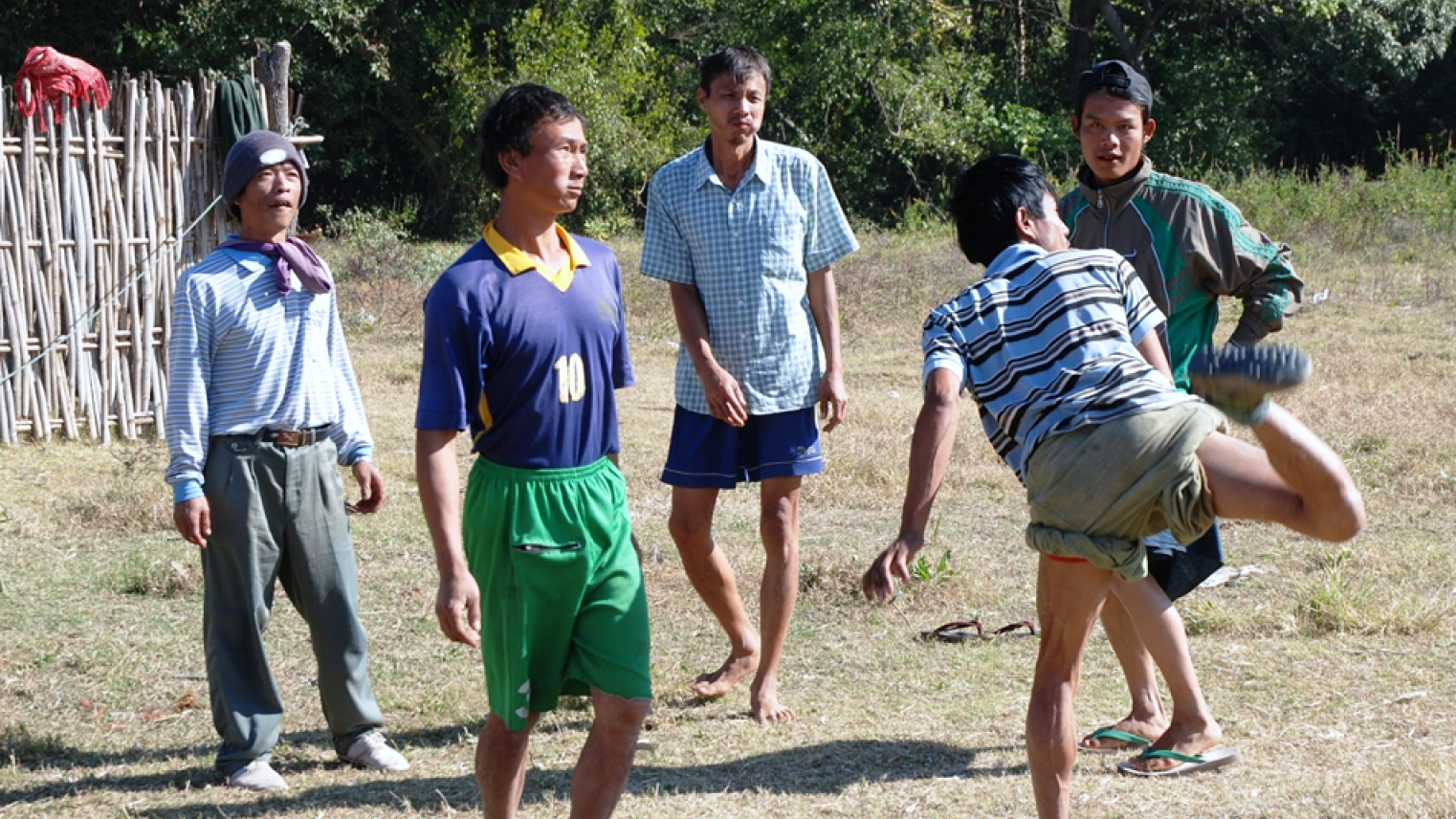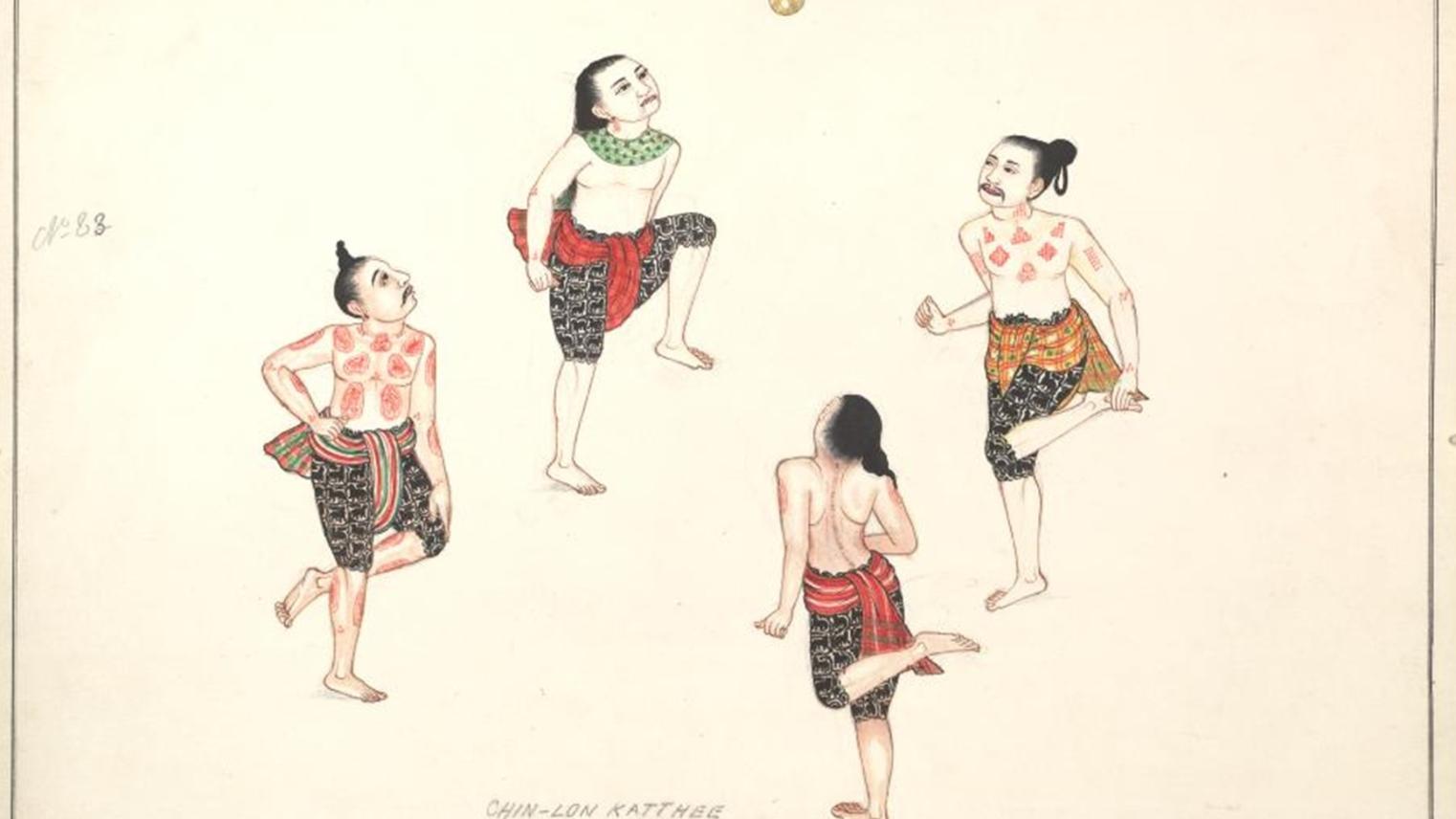Chinlone: The Agile Art of Burmese Cane Soccer

Chinlone, the traditional sport from Myanmar, stands at the intersection of athleticism, culture, and craftsmanship. Unlike typical games, Chinlone is not about scoring goals but about keeping the ball—made from meticulously handwoven rattan cane—in constant, fluid motion. The ball itself is a testament to craftsmanship, requiring around 50 pieces of rattan woven together to create its distinctive light weight and bouncy texture. It’s a game where each move is a calculated play, and every pass is a testament to skill and precision.
The Graceful Artistry of Play
At the heart of the game is the ‘server,’ the player who keeps the ball aloft with a series of deft touches using their feet, knees, and heads. The aim is to maintain control and rhythm, much like a well-rehearsed sports team working in perfect harmony. The challenge is not just to keep the ball in the air, but to do so with grace and consistency, avoiding any slip-ups that might break the flow. Players often incorporate elaborate and artistic moves into their game, such as spinning, balancing, and acrobatic kicks, showcasing the sport’s artistic side and blending athleticism with artistry.
Circles of Joy: The Cultural Heartbeat
Chinlone is played in a circle, with the team working together to keep the ball moving. This circle, known as the “circle of joy,” symbolizes unity and community, emphasising not only the physical skill of the players but also their ability to work together in a rhythmic and harmonious manner. The game’s performance aspect is often accompanied by traditional music, adding to its cultural richness and highlighting the harmonious balance between body and spirit revered in Myanmar’s cultural practices.

From Ancient Tradition to Global Stage
Historically, Chinlone was predominantly a male-dominated activity, but it has evolved to become more inclusive, with women now actively participating and excelling. The sport has transitioned from traditional performances to competitive formats, where players are judged on skill, creativity, and coordination.
In recent decades, Chinlone has gained international recognition, with teams traveling from all over the world to “compete” in the Waso Chinlone Festival held at Mahamuni Pagoda in Mandalay anually. In 2013, Chinlone was also included in the SEA Games (Southeast Asian Games) for the first time, and teams took to a court.
These events have introduced Chinlone to a wider audience, fostering cross-cultural exchange and appreciation.
Chinlone: A Cultural Icon in the Spotlight
Despite its evolution, Chinlone remains deeply rooted in its cultural heritage. It was traditionally played during Buddhist festivals and ceremonies as a form of homage and celebration. The game’s inclusion of specific rituals, such as prayers and symbolic gestures performed before and after the game, underscores its cultural significance and its role in ensuring good fortune and harmony.
Chinlone has also made its mark in popular culture, appearing in films and literature as a representation of Myanmar’s cultural identity. Its influence extends beyond the sport itself, inspiring artists and performers around the world. This cultural prominence reflects Chinlone’s enduring relevance and its ability to captivate audiences both within Myanmar and globally.
A Legacy in Motion
Chinlone stands as a vibrant expression of Myanmar’s cultural pride and artistic spirit. Its unique blend of sport, art, and tradition highlights the enduring significance of this traditional game, showcasing how a historical practice can evolve into a celebrated international sport while maintaining its deep cultural roots.
Join the Chinlone craze at Immersia 2024! Experience the thrill of Burmese cane soccer and explore its cultural roots at CHL’s flagship multicultural event! Know more and register here.